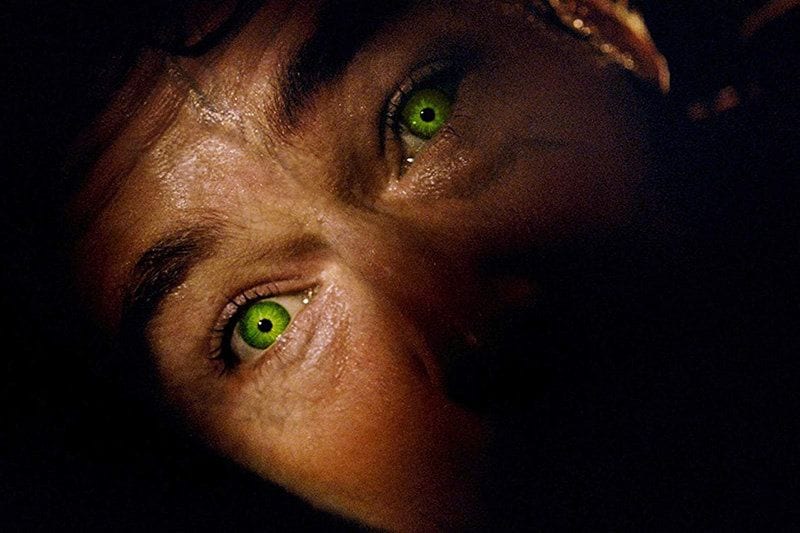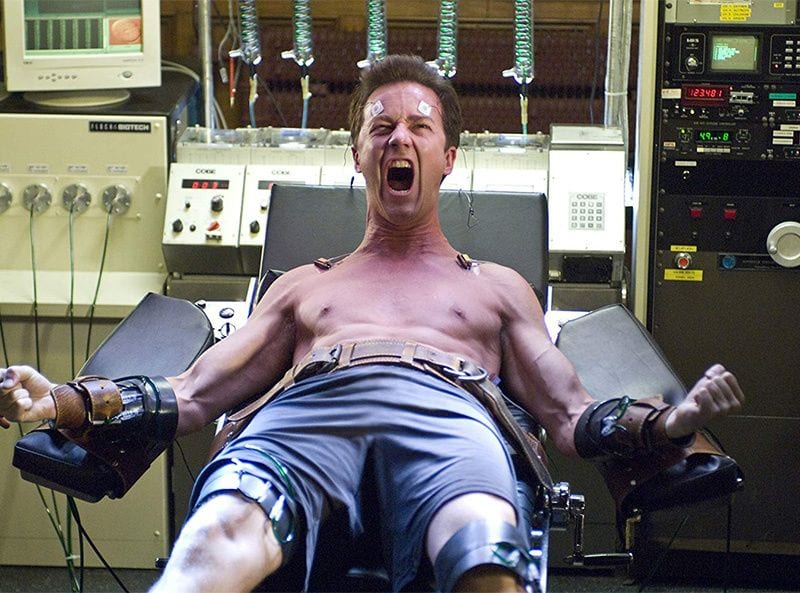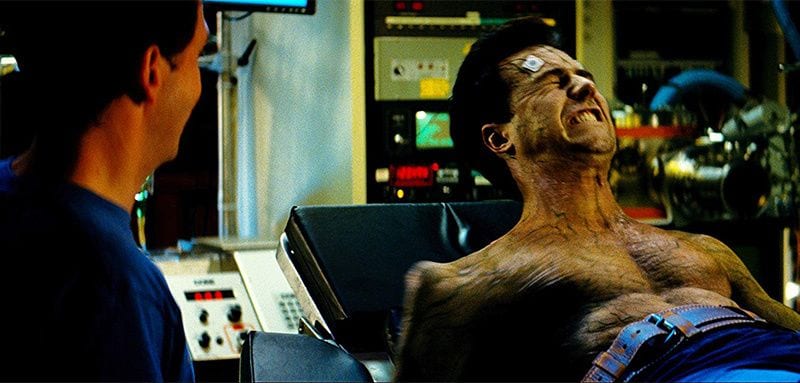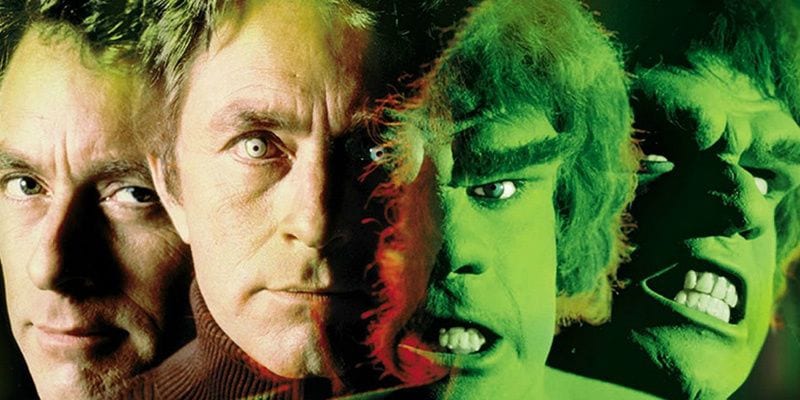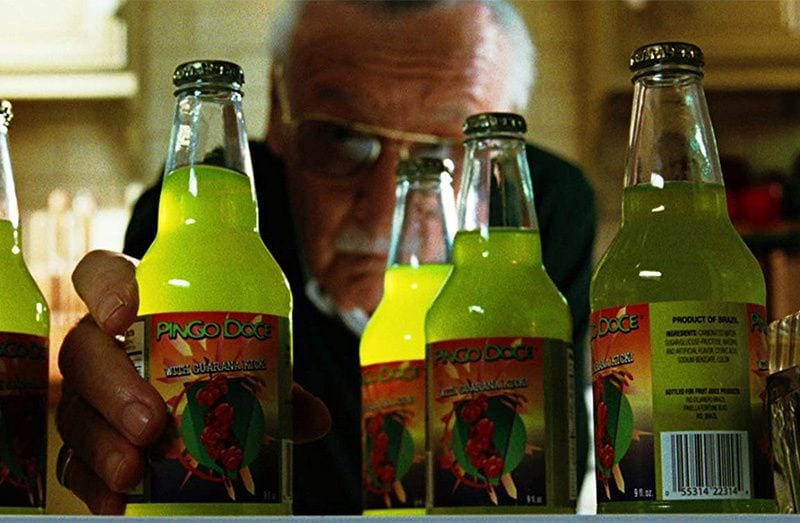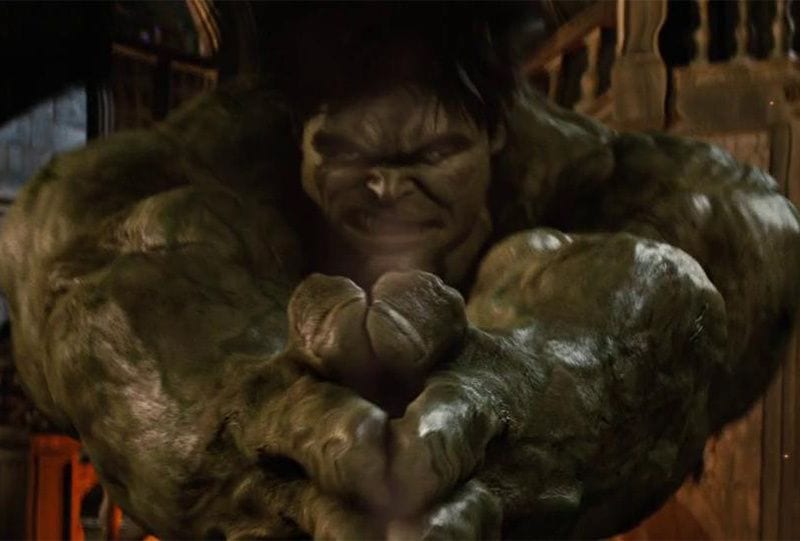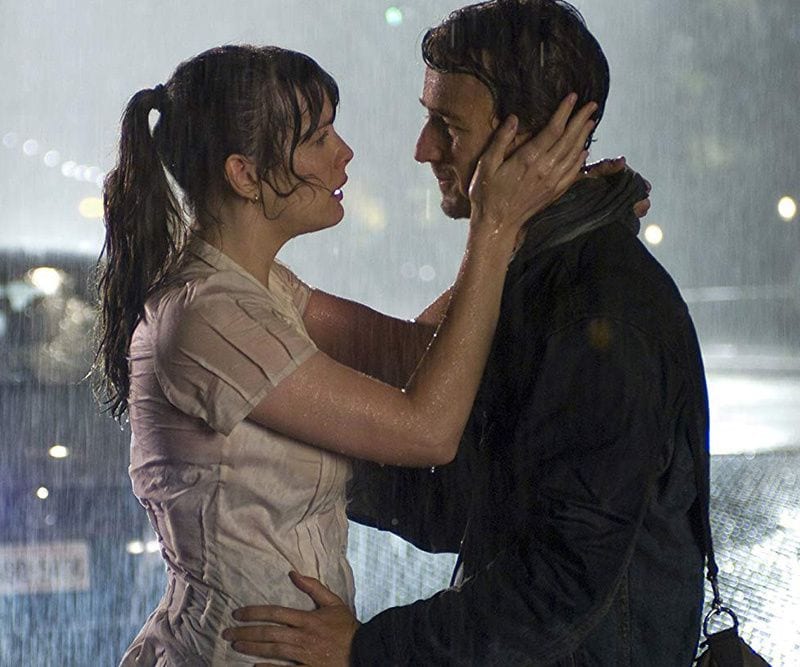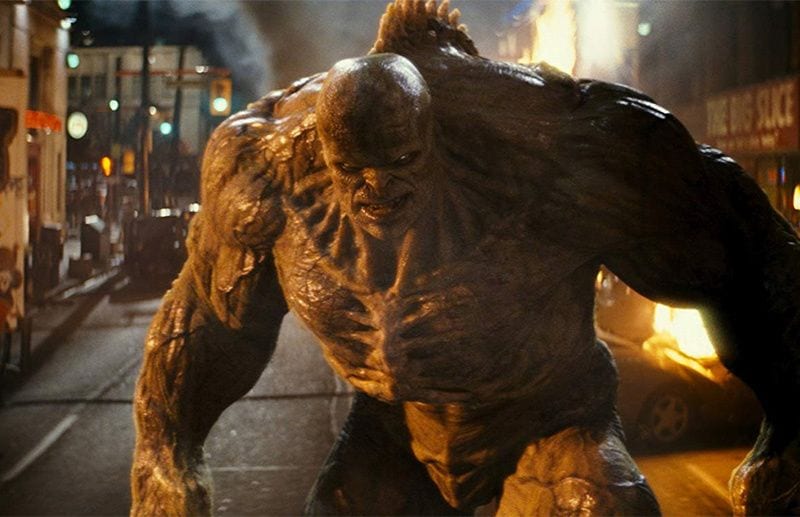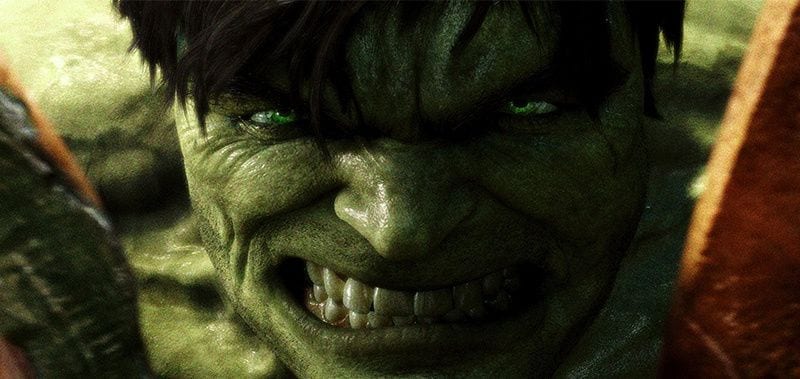Although it would enter more common usage several years later, the concept of “superhero fatigue” began popping up in the summer of 2008. I may have missed an earlier example, but the first instance of its usage that I found in was in Chris Bumbray’s review of The Incredible Hulk (Letterier, 2008) for JoBlo.com. In his introduction, Bumbray writes, “…I’m kind of sick of superhero movies. Don’t get me wrong- – I loved IRON MAN as much as anyone, but I must admit that I’m suffering from a little superhero fatigue…” As far as I can tell, Bumbray coined this term which came to encompass the sentiment shared by some film critics and fans that superhero films had taken over blockbuster cinema, or cinema in general. That we seem doomed to view countless computer-generated extravaganzas where super-powered beings struggled with their powers in the same ways, and fought each other in similar climaxes.
Two months and three or four superhero films later, A.O. Scott wrote an article for the New York Times, “How Many Superheroes Does iIt Take to Tire a Genre?“, wherein Scott takes a wider view of the issue of superhero fatigue. The year 2008 was a high-water mark for superhero cinema, with the release of brilliant films such as The Dark Knight (Nolan), Iron Man (Favreau) and Hellboy II: The Golden Army (Del Toro), as well as hits like Hancock (Berg), Wanted (Bekmambetov) and The Incredible Hulk (Letterier). Scott insightfully recognized this at the time, and pondered whether this peak would precipitate the sharp decline of the genre. He almost wishes for it:
“Still, I have a hunch, and perhaps a hope, that ‘Iron Man,’ ‘Hancock’ and ‘Dark Knight’ together represent a peak, by which I mean not only a previously unattained level of quality and interest, but also the beginning of a decline. In their very different ways, these films discover the limits built into the superhero genre as it currently exists.”
Of course Scott could not have predicted that, over the next decade, superhero films would multiply and become even more pervasive. That the Marvel Cinematic Universe would become a box office powerhouse, and a model that all other studios would try (and mostly fail) to copy.
From Blade (Norrington, 1998) to The Incredible Hulk (Letterier, 2008), in the first decade of the Marvel films there were 18 released. Many of these films, and ones released by other companies, had developed the comic book film into one of the pillars of blockbuster entertainment. With so much success happening so quickly, people naturally began discussing audience fatigue and the imminent decline of the genre. These were common refrains over the next decade (2008-2018), during which time 31 more Marvel films were released and comic book films became even more influential. The year 2008 was indeed a turning point. But this high-flying genre did not crash afterward as expected — it launched higher into the stratosphere.
Of course, nobody knew that would happen. With The Incredible Hulk, the burgeoning Marvel Studios was struggling to build out the shared cinematic universe that had begun with the release of Iron Man (Favreau, 2008) just seven weeks earlier. But the film represented more than that. This was the first do-over of a Marvel Comics property in this era. In 2003, Hulk directed by Ang Lee, was released and filmgoers were overwhelmingly disappointed with its murky psychology and misinterpretation of the character, despite its innovative visual storytelling devices. In interviews throughout production of The Incredible Hulk, the filmmakers and producers struggled to define this new film’s relationship with Lee’s film. Producer Gale Ann Hurd awkwardly described The Incredible Hulk as not quite a sequel, not quite a reboot, but a “requel”.
The film could have been exactly the type of thing that superhero fatigue predictors were anticipating: a redundant retread of a concept that was still fresh in the minds of audiences. The cinematic beating of a dead horse. Instead, Marvel Studios approached the film as a remedy to superhero fatigue. It examined what had gone so wrong with Hulk, and aimed to correct its approach for Incredible Hulk. As the following decade demonstrated, learning from past mistakes is how the genre continued to survive and thrive. The Incredible Hulk is certainly not a perfect film, and in some cases it over-corrected from Hulk to the detriment of this film, but it demonstrates Marvel Studios’ attempts to do better. And these attempts are why superhero fatigue has yet to set in.
The Incredible Hulk is often considered the black sheep of the Marvel Cinematic Universe. It shares fewer connections to the larger MCU than most other films in the series. It’s the only film of Phase One (films leading to Whedon’s 2012 The Avengers) to not feature Samuel L. Jackson’s Nick Fury, for example. Conventions such as mid- or post-credits scenes had not yet been solidified, making this the only MCU film to completely end when the credits roll. Behind the scenes, Hulk was the only major MCU character to have a major solo film before released prior to the establishment of the MCU (at least until Spider-Man joined the universe in 2016). Negative reactions to Hulk gave The Incredible Hulk extra baggage that other MCU films didn’t have upon their releases. The Hulk would appear in several future MCU films, but the monster would be redesigned and Bruce Banner, here played by Edward Norton, was replaced by Mark Ruffalo in future installments. In fact, the only actor in The Incredible Hulk to appear in later films is William Hurt as General Ross. Finally, The Incredible Hulk was distributed by Universal Pictures, and not Paramount Pictures like every other early MCU film. This is due to a previous licensing deal between Marvel and Universal that, reportedly, is the reason the Hulk has never had another solo film.
All of these issues have distanced The Incredible Hulk from the rest of the Marvel Studios oeuvre in later years. It doesn’t help that the film is one of the Studios’ weaker efforts. It’s not a terrible film, by any means. It just doesn’t hold up to the remarkably consistent high level of quality for which Marvel Studios films have become known.
The first issue the filmmakers behind The Incredible Hulk needed to tackle was its relationship with Ang Lee’s film. In 2006, after Universal failed to make a sequel to Hulk, the rights to produce another Hulk film reverted to Marvel, and Marvel chose it as its second MCU film. Early drafts of the script included more explicit connections to the earlier film, but those were gradually dropped as the film drifted more towards a “requel” than a sequel. The origin was reimagined from the earlier film, and then minimized in an attempt to avoid retreading the same territory. Louis Letterier was hesitant about directing The Incredible Hulk if it meant continuing Lee’s unique visual storytelling devices. He signed on only after being assured that this film would be totally different. Ultimately, the only real connection to Hulk is the film’s opening setting, South America, which is where Hulk ended.
The major issue with Hulk is a fundamental misunderstanding of the central character, Bruce Banner/Hulk, namely what made him a hero. In the comics, the Hulk’s personality and Banner’s control of him has shifted depending on the story. Most of the time, though, Bruce Banner is a hero because he is all that stands between the world and this destructive monster. Keeping himself in control and trying to cure himself are his main objectives, as well as keeping himself out of the hands of people who would try to exploit the Hulk. Even so, Banner sometimes sees situations where people need help, and he helps them even though it may risk unleashing the Hulk. Other times, he finds a situation where he can direct the Hulk at a villain for the greater good. These are the ways Bruce Banner is a hero. These are the qualities that were exemplified by the hugely popular Incredible Hulk television series starring Bill Bixby and Lou Ferrigno.
This series was a major inspiration on The Incredible Hulk according to everyone involved. The film depicts Banner (Edward Norton) as a fugitive, on the run from the American military, represented by General Ross (William Hurt). He helps people, fixes things, but keeps a low-profile as he desperately searches for a cure to his condition and pines after his estranged girlfriend, Betty Ross (Liv Tyler), General Ross’ daughter. Narratively and tonally, the film is a spiritual successor to the television series. Edward Norton was even cast in part because his nebbish, everyman good looks reminded producers of Bill Bixby. The origin story gets a bit of an update, as Banner’s research in the film was part of a larger effort by the military to develop a new super-soldier. This concept is taken directly from Marvel’s line of Ultimate Comics from the early-’00s, which updated and modernized many of Marvel’s classic characters and stories. The super-soldier link also draws a direct line from Captain America to the Hulk, in a clever bit of universe building that Marvel Studios was beginning to explore. Overall, this realigning of Bruce Banner/Hulk to be more heroic was very welcome and demonstrated that the filmmakers learned from their past missteps. It also achieved Marvel’s ultimate goal with this film: creating a character that could one day cross over with the likes of Iron Man in future films.
The Incredible Hulk opens with the origin of the Hulk told in a quick montage over the opening credits. The imagery of Banner running a test on himself directly quotes imagery from the television series. The extremely streamlined origin, depicting Banner getting zapped in the lab, the Hulk’s point-of-view as he attacks Betty and Ross, Betty injured in the hospital, and Ross antagonizing Banner into leaving, establishes the efficient, no-frills pace of the film. After the credits, it’s five years later, and Banner is hiding in a Brazilian favela. The film dives into another montage, depicting Banner’s low-key lifestyle, his under-the-table work at a soda bottling plant, his attempts to control his heart rate (and therefore, his transformations) through jujitsu and breathing exercises, and his encrypted online collaboration with the mysterious Mr. Blue in a hopeless attempt to find a cure. Banner encounters a group of sleazy guys harassing a female factory worker and, despite risking a Hulk transformation, he defends her.
Thus, with its two opening montages The Incredible Hulk immediately re-establishes the history and present of Bruce Banner, and reimagines him as an update of the popular television incarnation. He’s on the run, trying to control himself, trying to cure himself, but also willing to put himself at risk to help those in need. The opening of the film economically gets the groundwork out of the way so that the plot can begin. It’s also the perfect solution to the issue of origin stories. Critics have long complained that superhero origins have become too repetitive, and often long for films to throw audiences right into the action. The Incredible Hulk deftly accomplishes this goal.
The real plot starts when, while repairing a faulty switch in the factory, Banner cuts his finger and a drop of blood lands in an empty soda bottle. (Ew!) Despite his precautions, the bottle is filled and shipped to the United States, where a man who looks just like Stan Lee drinks the soda. The ensuing gamma poisoning alerts General Ross, who immediately assembles a special forces team to track down Banner at the Brazilian factory. The team is led by Emil Blonsky (Tim Roth, a short, wiry, unlikely action star), whose credentials are quickly described to Ross as the film’s efficient storytelling continues. Blonsky’s team descends on Banner’s favela home, and a chase through the slum houses begins.
The chase is kinetic and exciting, with a great use of the unique setting that would be repeated three years later in the action classic Fast Five (Lin, 2011). Blonsky immediately emerges as a smart, in-control soldier who adapts to every situation and makes a very imposing hunter for Banner. Banner, meanwhile, must struggle to escape while often pausing to lower his heart rate. The claustrophobic, heavily-populated favela surroundings feel all the more constrictive when the threat of a giant, out-of-control monster also looms. The best moment in the chase comes when Banner encounters Ross’s control van, and Norton and Hurt flex their silent acting muscles with a very pointed shared look that speaks volumes. Some of The Incredible Hulk‘s best moments come from these wordless scenes, whereas the more dialogue-heavy later sections are weak by comparison.
The Brazil sequence culminates with Banner trying to hide out in the factory, only to be cornered by the sleazy guys he confronted earlier, who trigger the first Hulk-out of the film. Much of this Hulk sequence plays out in shadows, as the Brazilian toughs are quickly dispatched, and Blonsky’s soldiers are caught off-guard. Another part of learning from Ang Lee’s mistakes was not withholding the Hulk too long. Hulk held off for an hour before the first transformation, whereas The Incredible Hulk introduces the monster before the 25-minute mark. Letterier also made a point to limit his Hulk to nine feet, as opposed to the constantly growing version in Hulk. The rest of the character redesign I’m less than crazy about. Letterier insisted the Hulk have zero fat, making him solid muscle. Though this makes logical sense given the situation, there’s something to be said for the more classic, stylized look from Hulk and later perfected in The Avengers (Whedon, 2012). Letterier’s Hulk looks too weirdly stretched out, too sinewy.
After Brazil, the film branches into parallel stories: Banner returning home to retrieve data that could help cure him, and Blonsky petitioning Ross for an edge in his next Hulk encounter. The Banner story continues to bounce along at a fast pace and make use of Norton’s silent acting chops. As composer Craig Armstrong quotes Joe Harnell’s classic “Lonely Man Theme” from the television series, Banner makes his way through Central America begging for change and clothes in a sequence that I always find surprisingly poignant. He makes his way to the fictional Culver University, shot on the campus of my alma mater, the University of Toronto, where he catches a glimpse of Betty. The longing in Norton’s face as he sees his lost-love, happily living her life and meeting up with her new boyfriend, expertly conveys Banner’s sadness and isolation. Later, when Betty glimpses him hiding out at a local pizza place, Liv Tyler conveys longing that perfectly matches Norton’s.
Unfortunately, they are soon reunited and begin to speak to each other. Chemistry between co-stars is something that cannot be practiced or faked, and sadly Norton and Tyler have none of it. This is not a criticism of their respective acting abilities, but they just don’t gel. They play their scenes together with an intentional awkwardness and tentativeness, but it comes off very stilted. The movie starts to lose me when they interact. Given that their relationship is the heart of the film, that’s a problem.
Meanwhile, Blonsky recognizes his inability to compete with the Hulk, and asks Ross if there’s any way to change that. Ross explains that Banner’s research was part of an attempt to restart the super-soldier program from the Second World War, a reference that would later be fleshed out in Captain America: The First Avenger (Johnston, 2011). This also reveals Ross’ main motivation, which is not to stop the Hulk but capture him as a key to unlocking super-soldier secrets. He admits that they made some progress in their research, and they begin experimenting on Blonsky. This section of the film culminates in a massive fight at the university, when Ross’ men descend on Banner and trigger a Hulk-out. Here is where the effects are really allowed to shine. Unlike the shadowy factory scene or the final fight at night, the university sequence features the Hulk in a field in broad daylight. And it looks really good! The scene has some fun inventiveness, with massive sonic cannons used to subdue the Hulk, and a supercharged Blonsky giving a preview of how Captain America may fight in upcoming films.
The fight ends when Blonsky is defeated, and nearly killed, and Hulk saves Betty from a crashing helicopter. Hulk absconds with Betty to a grotto, where she sees enough of Banner in the Hulk to make a connection. The effects team did an excellent job in this grotto scene of putting Norton-esque facial expressions on Hulk’s face. Another issue with Hulk was a disconnect between Bruce Banner and the Hulk. That is not the case here. But also, at this point in the film, it becomes clear that despite the streamlined fast pace of the film, not a lot has happened. Ross finds Banner in Brazil, Banner runs back home for data, he encounters Ross again, and then Banner and Betty head to Manhattan to meet with Mr. Blue and have one final fight. The Incredible Hulk is a lean film, the second shortest MCU film to date (just seconds longer than Thor: The Dark World (Taylor, 2013)), but one wishes they had allowed it to breathe a bit more. It’s very quick to establish characters and their motivations, but it never really allows any of the characters to develop besides Blonsky. The fast pace makes for a fun ride but also makes the film more disposable or forgettable.
But I will also add that I liked a lot of the subtle humour sprinkled throughout the film. Though not quite as engaging as Iron Man or future Marvel Films, the humour was always appreciated. In Brazil, Banner warns the sleazy guys in his imperfect Portugese to not make him “hungry. You wouldn’t like me when I’m hungry,” a play on the most famous line from the television series. After his Brazil Hulk-out, Banner awakens and asks a nearby man for help in Portuguese, only to learn that the man speaks Spanish. Banner has awoken 5,000km away in Guatemala. Later, Betty tries to sleep with Banner, but he stops her to prevent him from getting over-excited and transforming. Finally, when Betty suggests they take the subway in Manhattan, Banner replies “Me in a metal tube in the most aggressive city in the world?” These are all nice moments of levity, worth noting because the rest of the film can feel fairly serious. That seriousness is the same reason that Dr. Samuel Sterns (Tim Blake Nelson) feels so out of place.
Sterns is revealed to be Mr. Blue, Banner’s mysterious scientific ally. Nelson plays Sterns as an over-the-top dork, so excited by the scientific potential of Banner’s condition that he does not fully consider the dangers. I like Nelson’s performance, and I know real people who act just like Sterns, but he does not really fit the film. Sterns uses a procedure to successfully stop a Hulk-out, perhaps curing Banner for good. But then he reveals that he has replicated a sample of Banner’s blood to explore it further, horrifying Banner and Betty. Just then, Ross and Blonsky converge and take Banner into custody. Blonsky stays behind with Sterns. He has completely healed due to Ross’ experimentation, but the serum has begun to mutate his body. In full junkie mode, he demands more and coerces Sterns into injecting him with Banner’s blood. The effect is immediate, and Blonsky turns into a large creature with protruding bones based on the Hulk comics villain the Abomination.
At this point, The Incredible Hulk‘s pacing gets a little out of control. More plot is stuffed into these ten minutes than the entire previous 80 minutes. We have barely had enough time to process Sterns’ introduction, when we have Banner possibly cured, then captured, and a huge supply of his blood taken, and Blonsky transformed and running amok in Harlem. And none of it quite lands because the film never sells the ideas it’s offering up. These are interesting, involving concepts that whip by so fast that they have an unintended numbing effect.
Banner demands to fight Blonsky, feeling that he’s the only one capable of stopping him. He jumps out of Ross’ helicopter, not knowing whether he’s still able to become the Hulk, which is a great heroic moment. Of course he does transform upon impact, and Hulk and Blonsky run at each other in front of Harlem’s famous Apollo Theater. As someone who lived in Toronto soon after The Incredible Hulk was filmed, I recognize that this is Yonge Street. Visible next to the superimposed Apollo Theater are the famous neon turntables above Sam the Record Man and the huge neon sign for the Zanzibar strip club. It’s pretty specific, but I get a kick out of it.
The two monsters fight through the city, ending next to Ross’ crashed helicopter in the ruins of an old church. Another issue with Ang Lee’s Hulk was the lack of a villainous physical match for the hero, which Blonsky offers. With a character like Hulk, audiences want to see him heroically let loose against something other than the United States military, as he does here. The fight ends brilliantly with Hulk speaking his most famous line, “HULK SMASH!!”, and defeating Blonsky, then kicking the monster to literally lay at Ross’ feet.
The Hulk then rushes off and, in keeping with the previous 20 minutes of the film, The Incredible Hulk rushes to its conclusion. A quick shot of Betty in New York, an ambiguous shot of Banner meditating in an isolated cabin but smiling as his eyes turn green, then Ross drowning his sorrows at a bar. The last shot of Banner was meant to either imply that he had gained control over the Hulk, or that he was totally losing control, whichever fit with how Marvel intended to use him in The Avengers. This should have been the final shot before the credits. The bar scene, had the filmmakers known the imminent prominence of post-credits scenes, should have been after the credits. The scene features Ross being approached by Tony Stark (Robert Downey Jr.), and the two trading banter before Stark implies that his new “team” could help with the Hulk problem. This is a perfect post-credits scene: not wholly necessary to the plot, but tying it into the larger cinematic universe. But the success of Iron Man prompted Marvel to put Downey’s cameo in the marketing for The Incredible Hulk to draw in audiences. They were too worried about backlash if audiences did not stay through the credits to see it. Of course, now Marvel has trained audiences to sit through all credits, so that concern seems silly in retrospect.
Marvel Studios’ goal with The Incredible Hulk was to rehabilitate the Hulk in the minds of moviegoers after the disappointing 2003 film, and also reimagine him as a more heroic character that would fit with the larger universe they were crafting. In that sense, it was mission accomplished. But the film is not so great. It lacks strong characters or relationships at its core to make it meaningful, and it moves at too fast a pace to allow some of its better ideas to breathe. In terms of box office, it made slightly more than Hulk at the domestic and worldwide box office, which is a win. However, adjusted for ticket price inflation The Incredible Hulk actually sold 14 percent fewer tickets at the North American box office compared to Hulk. It’s also the lowest-grossing Marvel Cinematic Universe film by any measure, and will likely retain that title moving forward as Marvel Studios continues its great run of success. Finally, it mostly remembered for Marvel’s most significant and contentious recasting to date.
Edward Norton took a very hands-on approach to the material. Reportedly, David Duchovny was a frontrunner for the role, and in 2013 Louis Letterier stated that Mark Ruffalo was his top choice, ironically. Norton scored the role, though to no one’s great disappointment. He’s a terrific, Academy Award-nominated actor known for choosing interesting roles. As a condition of his casting, Norton asked to rework the script. The screenplay was written by Zak Penn, who wrote a Hulk draft way back in 1996 but basically started from scratch for this film. Although Norton reportedly reworked much of the screenplay, even up to halfway through filming, Penn received sole writing credit. Norton was also reportedly very involved in the editing of the film, which is where a lot of behind the scenes drama seemed to occur.
The studio reportedly argued for a relatively short running time, wanting the film to run less than two hours, which would explain the extremely streamlined pace. Norton and Letterier argued for at least 20 more minutes, which certainly would have allowed the film to breathe, but the studio cut won out. There are reportedly 70 minutes of deleted scenes from the film, which is not unusual for a big film. But much of this extra footage was background and much-needed character-building material. The clearest proof of major last-minute editing is the film’s trailers, which feature several prominent scenes that are absent from the final cut. Reports around the release stated that Norton refused to do press for the film as a result of his editing battles, but he claimed that was not the reason. Two years later, negotiations between Marvel and Norton over The Avengers broke down, with Marvel releasing a surprisingly harsh statement stating that they were looking for a more “collaborative” actor to work with. So, clearly, Norton clashed with the Marvel producers, and maybe his hands-on approach was not appreciated.
Marvel Studios has long played out the creative vision of super-producer Kevin Feige. These days, Feige has become known for handing over major projects to quirky filmmakers such as James Gunn, Taika Waititi and Ryan Coogler, and allowing them to shape their own visions. However, so early in the life of the Marvel Cinematic Universe, with its success so uncertain, I think Marvel Studios was just skittish about losing control. A strong personality such as Norton’s that potentially disagreed with the studio’s overarching vision must have turned Marvel off. It’s interesting to think what may have come of the MCU had Norton remained an integral player.
As for the Hulk character, Marvel Studios owns the rights to use the property in other films and to produce solo films, but Universal has the rights to distribute the solo films. When Disney purchased Marvel, it eventually purchased the distribution rights to many properties but has not, as yet, acquired the solo Hulk distribution rights. This is why there has not been another solo Hulk film, despite an increased demand after well-received appearances in The Avengers (Whedon, 2012) and Thor: Ragnarok (Waititi, 2017). And so, as it stands, Hulk has received two imperfect solo films by two different actors. When audiences next encountered Hulk, he would be perfected by Joss Whedon and Mark Ruffalo.
Stan Lee Cameo Corner: Stan drinks the wrong soda, and inadvertently alerts the authorities to Banner’s location. That is 11 cameos in 18 films. At this point, the cameos had been so firmly established that it was more notable when he did not appear.
Credits Scene(s): None, but the last scene should have been.
First Appearances: Martin Starr appears as a Culver University lab technician, and would later appear as a high school teacher in Spider-Man: Homecoming (Watts, 2017)
Marvel Cinematic Universe Viewing Order:
This is my first big change between the release order and viewing order. Tony Stark’s appearance in this film makes more sense coming after Iron Man 2 (Favreau, 2010) than after Iron Man (Favreau, 2008). The super-soldier elements also provide a nice lead-in to Captain America: The First Avenger (Johnston, 2011).
- Iron Man
- The Incredible Hulk
Next Time: They try one last time to make the Punisher a movie star.

